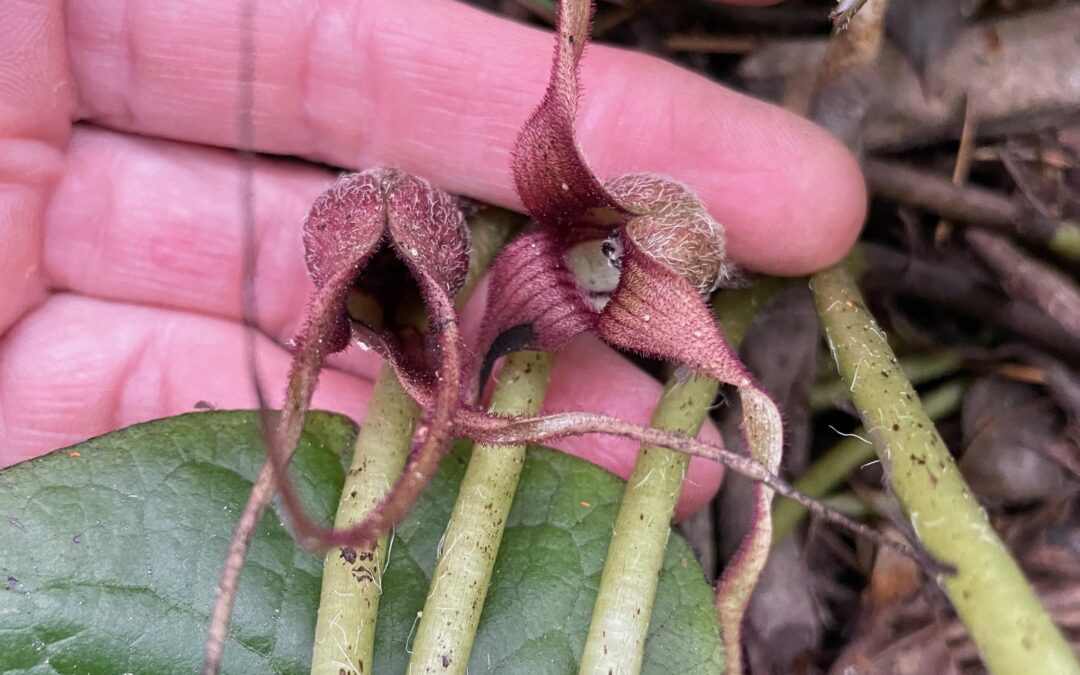You may have seen dark, heart-shaped leaves cascading down a slope under conifer trees in the deep forest. Or perhaps you have spied a carpet of hearts peeking out of a snowy bank in the woods. I have discovered Wild Ginger in several spots throughout the Pacific Northwest, in every season.
Our native Western Wild Ginger (Asarum caudatum), is one of our most beautiful woodland ground covers. It is not a true ginger, like the tropical species in your cookies or stir-fry, but the leaves do have a subtle, spicy scent if brushed or crushed. The roots are also spicy and have long been eaten by Indigenous people. They are reported to have antifungal properties.
Ginger is shy, and you have to work to discover their unusual, beautiful flowers. The purple-brown blooms are produced very low to the ground, and often they are partially buried in the soil or duff. These flowers have no petals but have three sepals with long mouse-like tails, and evolved to be pollinated by flies and beetles, so it makes sense to put the flowers where the pollinators are.
Our Wild Ginger is found from Montana to the Pacific Coast, from northern British Columbia to northern California, in moist, shady mixed-conifer forests up to 2,200’ or so in elevation. There is a particularly beautiful species called Marbled Ginger (Asarum marmoratum), whose leaves are marked with white. It is found only in the Siskiyou mountains in southwest Oregon and is quite a lovely sight to stumble upon. Wild Ginger has an environmentally-threatened southern cousin, the California Pipevine (Aristolechia californica), host to the beautiful Pipevine Swallowtail Butterfly.
Wild Ginger is a lovely way to cover a damp, shady space, and it spreads most readily by rhizomes, thick fleshy roots that pop up new plants where the roots wander, forming a dense mat. The plants also produce seeds from those secretive flowers, and they use ants to disperse them. Like Trilliums and Bleeding Hearts, the seeds bear a fatty appendage called an eliasome. The ants harvest the eliasomes and inadvertently take the seeds home to their colony with them. Once the fatty bits have been eaten, they disperse the seeds by “taking out the trash”, and a new Wild Ginger patch is born.
The plants are not difficult to find at native plant nurseries and plant sales. King Conservation District and others offer them through their annual native plant sale, as well.
Shelley Pascoe, SHADOW Land Management Specialist


Recent Comments